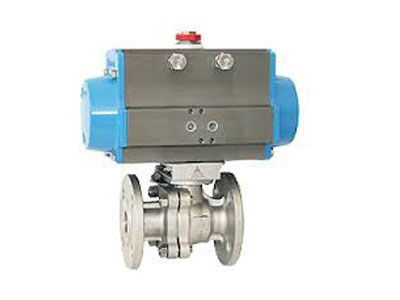Key Takeaway
There are several types of pressure relief valves (PRVs), each designed for specific applications and operating conditions. Common types include spring-loaded PRVs, pilot-operated PRVs, and balanced bellows PRVs.
Spring-loaded PRVs are the most common type, using a spring to control the valve opening. Pilot-operated PRVs use a pilot valve to control the main valve, providing precise pressure control. Balanced bellows PRVs are designed to minimize the effects of backpressure, ensuring reliable operation in various conditions.
Overview of PRV Types
Pressure Relief Valves (PRVs) are available in various types, each designed for specific applications and operating conditions. The main types include spring-loaded, pilot-operated, and balanced bellows PRVs.
Spring-loaded PRVs are widely used for their simplicity and reliability, providing direct response to pressure changes. Pilot-operated PRVs offer precise control and are suitable for high-pressure systems.
Balanced bellows PRVs are designed to handle backpressure effectively, ensuring consistent performance. Understanding these types is crucial for selecting the right PRV for specific system requirements.

Key Differences Between Types
Pressure Relief Valves (PRVs) come in several different types, each designed to handle specific applications and requirements. The spring-loaded PRV is one of the most common types, typically used for general overpressure protection in industries such as oil and gas or water treatment. It operates based on the force exerted by a spring, which is compressed when the system pressure exceeds the set point. This type is cost-effective and widely used for low-pressure systems.
Another type is the pilot-operated PRV, which is used in systems requiring more precise pressure control. It combines both a spring-loaded mechanism and an external pilot valve that adjusts the opening pressure based on system conditions. This type of PRV is often found in more demanding industries, such as petrochemical and chemical processing, where exact pressure control is necessary for safe operation.
Additionally, balanced-bellows PRVs are designed for high-temperature and high-pressure applications. They use a bellows element to maintain a consistent pressure differential, making them ideal for systems where temperature fluctuations affect the pressure. These valves are commonly used in power plants and refineries, where extreme conditions are standard. Each type of PRV has unique design features tailored to specific applications, ensuring safety and optimal performance in various industrial settings.
You May Like to Read
Applications for Each Type
Pressure Relief Valves (PRVs) come in different types, each suited for specific applications depending on factors such as fluid type, system pressure, and industry needs. Common types of PRVs include spring-loaded valves, pilot-operated valves, and balanced bellows valves, each with distinct functionalities and uses.
Spring-loaded PRVs are the most common and versatile type. They rely on a spring mechanism to keep the valve closed until the system pressure exceeds the set point. These valves are ideal for systems with relatively stable pressure, such as in water supply systems or HVAC applications, where pressure surges are rare but must still be managed to prevent damage to the piping and equipment.
Pilot-operated PRVs are more complex and are used in systems where pressure fluctuations are more significant, such as in oil and gas processing or chemical manufacturing. These valves use an external pilot to control the valve’s operation, offering more precise control over the release of pressure. They are especially useful in high-pressure systems where maintaining stable pressure is crucial, and they are typically found in large industrial applications such as power plants.
Balanced bellows valves are designed to handle corrosive or volatile fluids. The bellows mechanism helps to isolate the valve’s internal components from the pressure of the fluid, which is particularly useful in industries like chemical processing and pharmaceuticals, where the fluid may be chemically aggressive or hazardous. These valves ensure that the PRV responds effectively without allowing the corrosive fluid to affect the valve’s functioning.
Advantages and Disadvantages
Pressure Relief Valves (PRVs) come with a range of advantages, such as enhancing system safety by protecting against overpressure, which can lead to catastrophic failures. They are simple, reliable, and easy to maintain, providing essential protection for various industrial applications. Furthermore, they can be adjusted to meet specific pressure requirements, ensuring precise control.
However, there are also some disadvantages to consider. PRVs may experience wear and tear over time, particularly in high-demand systems, leading to performance degradation. Additionally, they require regular maintenance to ensure their functionality, and incorrect calibration can result in the valve failing to open at the appropriate pressure.
Despite these challenges, the benefits of PRVs far outweigh the disadvantages. They provide critical protection for industrial systems, ensuring safe operation and reducing the risk of expensive accidents and equipment failure.
Choosing the Right PRV Type
Choosing the right PRV type involves evaluating the specific needs of your system. Start by determining the pressure range and the type of fluid or gas involved, as this will influence the material and design of the PRV.
Consider the operational environment, such as temperature and potential exposure to corrosive elements. For instance, stainless steel PRVs are ideal for harsh conditions due to their durability and resistance to corrosion.
Finally, consult industry standards and certifications to ensure compliance with safety regulations. Working with a trusted manufacturer can help you select a PRV tailored to your operational requirements, enhancing system performance and safety.
Conclusion
Pressure Relief Valves (PRVs) come in various types, each designed to meet specific application needs. The main types include spring-loaded, pilot-operated, and balanced bellows PRVs. Spring-loaded PRVs are commonly used for their simplicity and reliability.
Pilot-operated PRVs offer precise control and are suitable for high-pressure applications. Balanced bellows PRVs are designed to handle backpressure effectively. Understanding the different types of PRVs is crucial for selecting the right valve for your system’s requirements.
